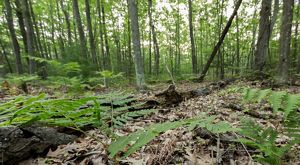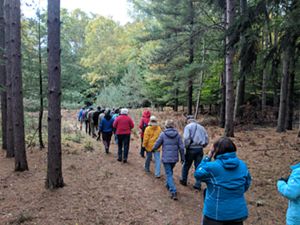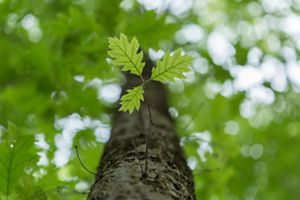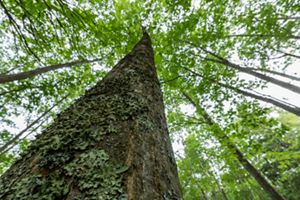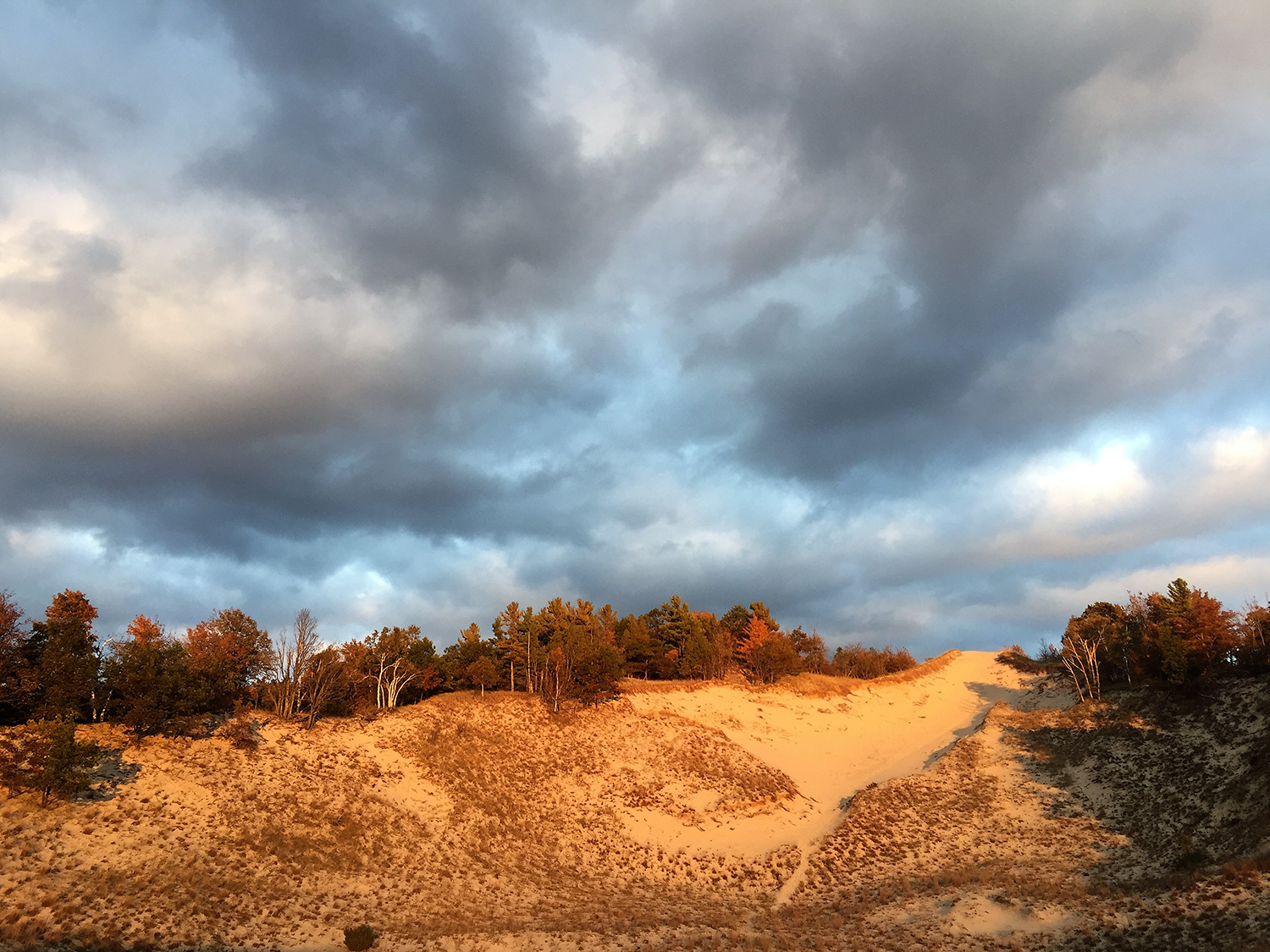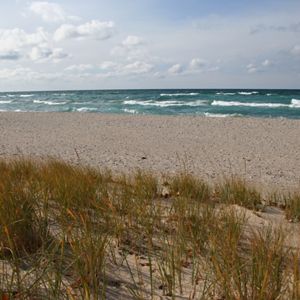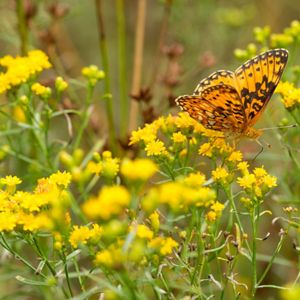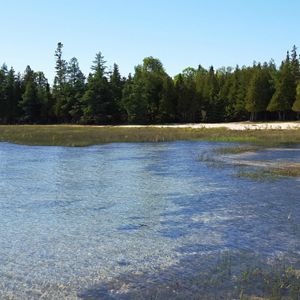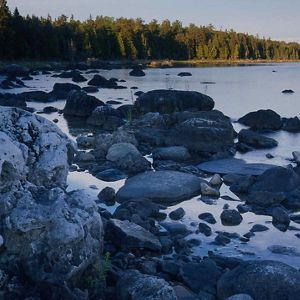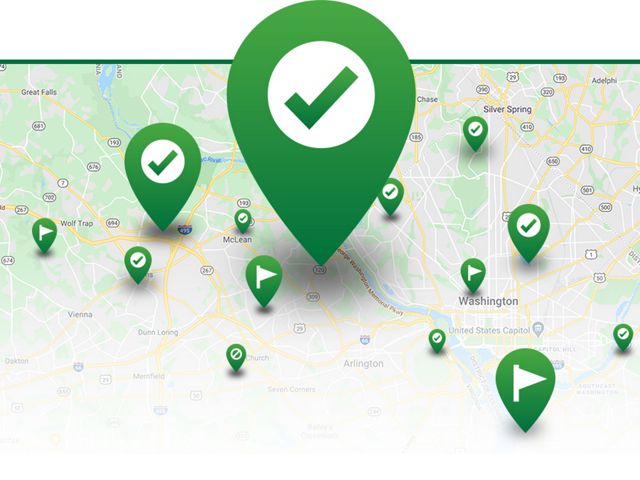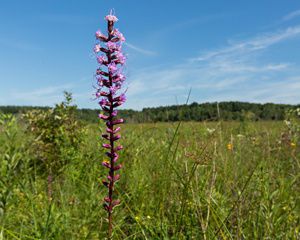Description
The Portage Point Woods Preserve lies in Eastern Lake Michigan near the town of Onekama and protects coastal ecological processes, including dynamic foredune and successional backdune systems. The shelter of backdune forests provides habitat for spring wildflowers such as trillium, hepatica, jack-in-the-pulpit, spring beauty, dwarf ginseng and bloodroot.
As you hike the looped trail, watch and listen for a variety of animal species, from songbirds and raptors to reptiles and amphibians. Be on the lookout for pileated woodpeckers, black-capped chickadees, rose-breasted grosbeaks, barred owls, red-shouldered hawks, eastern box turtles, American toads and eastern newts. Predators like coyotes and red foxes also hunt here for small mammals seeking shelter from the often-harsh coastal environment nearby.

